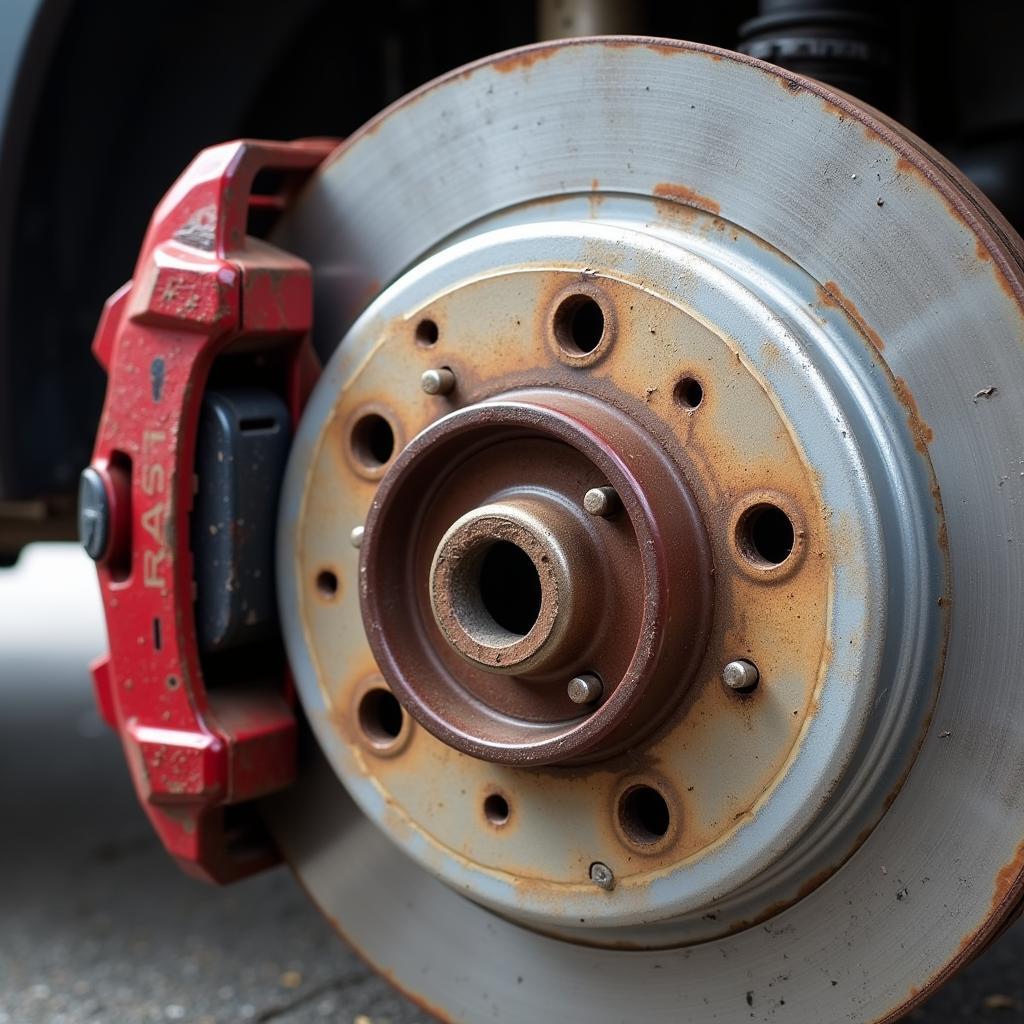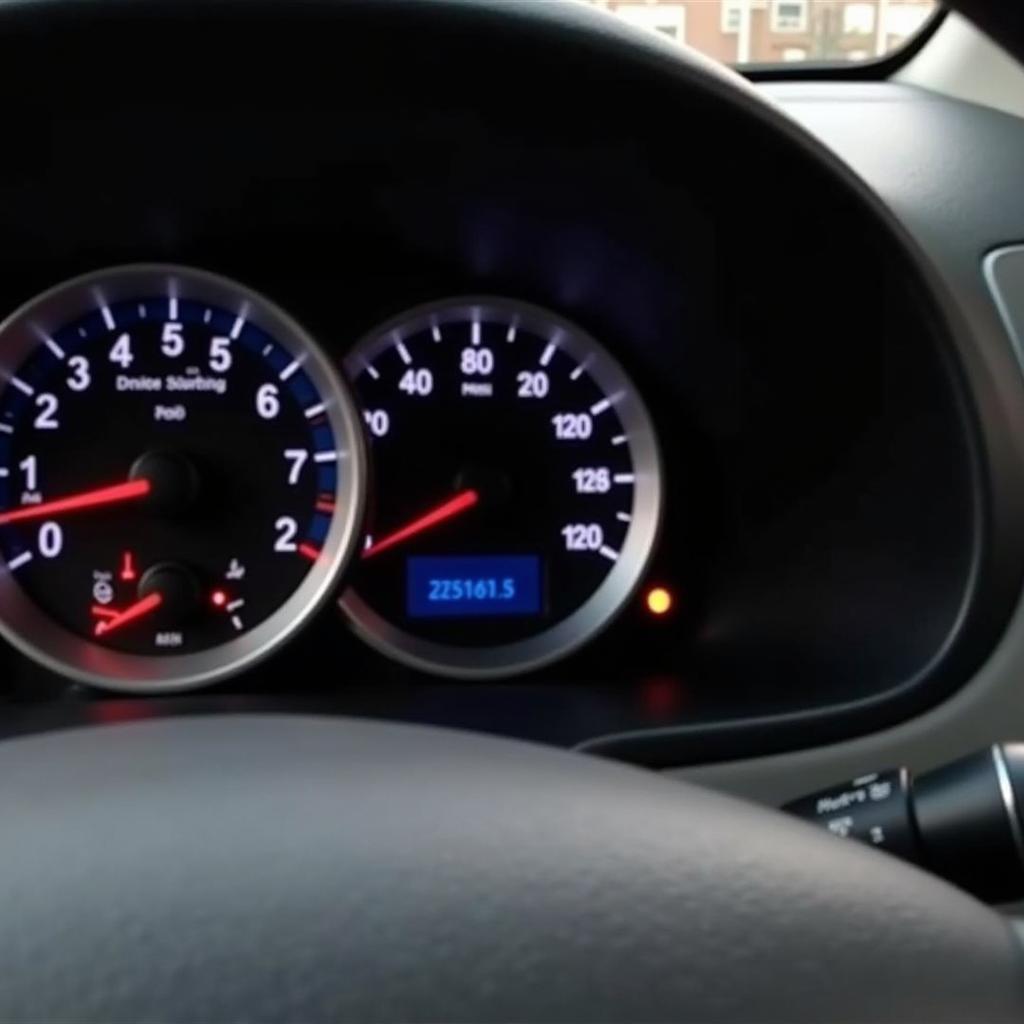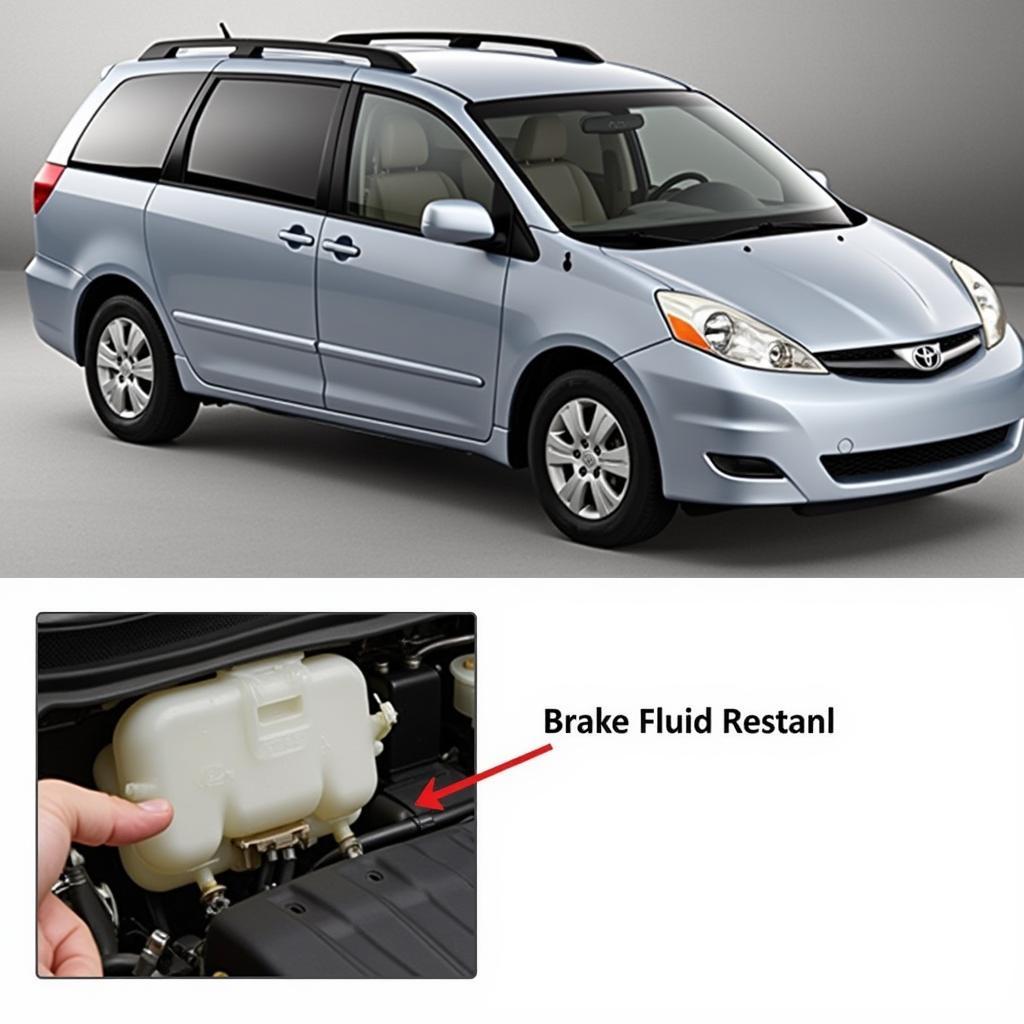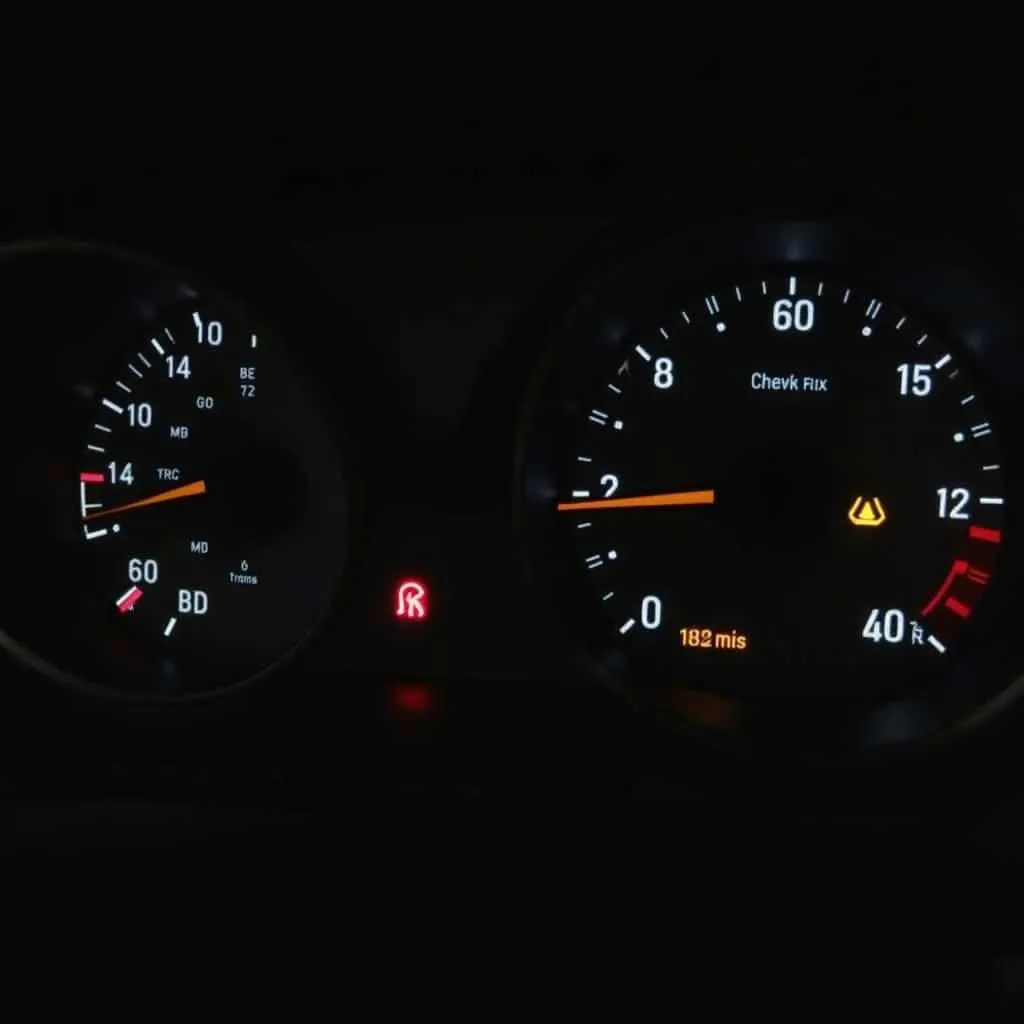Imagine cruising down the road in your trusty 2006 Toyota Sienna when suddenly, the brake warning light illuminates on the dashboard. This unwelcome sight can induce panic and uncertainty, leaving you wondering about the cause and urgency of the issue. Don’t worry! This comprehensive guide will walk you through the possible reasons your 2006 Toyota Sienna brake warning light is on and provide practical solutions to get you back on the road safely.
Understanding Your Sienna’s Brake System and Warning Light
Before delving into the specifics of why your brake warning light might be on, it’s crucial to understand the basics of your Sienna’s braking system. This system is designed with multiple components working together to ensure safe and efficient stopping power.
The brake warning light serves as a vital communication link between your vehicle and you. When illuminated, it signals a potential problem within the braking system that requires your immediate attention.
Common Reasons for the Brake Warning Light in a 2006 Toyota Sienna
There are several potential culprits behind a glowing brake warning light in a 2006 Toyota Sienna. Let’s explore some of the most common reasons:
1. Low Brake Fluid Level
Perhaps the most frequent reason for the brake warning light is a low brake fluid level. Brake fluid is the lifeblood of your Sienna’s braking system, responsible for transmitting the force from your foot on the brake pedal to the wheels. As brake pads wear down over time, the brake fluid level naturally drops. If it falls below a safe level, the warning light will activate.
Solution: Check your brake fluid level and top it up if necessary. Refer to your owner’s manual for the correct type of brake fluid and the location of the reservoir. If you notice a frequent need to add brake fluid, it could indicate a leak, which requires immediate professional attention.
2. Worn Brake Pads
Brake pads are designed to wear down over time as they generate friction to stop your vehicle. When the brake pads reach a certain level of wear, a sensor embedded within them triggers the brake warning light.
Solution: Have your brake pads inspected by a qualified mechanic. If they’re worn beyond a safe limit, replacement is necessary to maintain optimal braking performance and safety.
 Worn Brake Pads on a Toyota Sienna
Worn Brake Pads on a Toyota Sienna
3. Faulty Brake Caliper
The brake caliper houses the piston that pushes the brake pads against the rotor, creating the friction needed to stop the vehicle. A sticking or seized caliper can cause uneven brake pad wear, reduced braking performance, and trigger the warning light.
Solution: If you suspect a faulty brake caliper, have it inspected by a mechanic. They can diagnose the issue and recommend repair or replacement if needed.
4. ABS (Anti-lock Braking System) Issue
Modern vehicles, including the 2006 Toyota Sienna, are equipped with an Anti-lock Braking System (ABS). The ABS prevents wheel lockup during hard braking, enhancing vehicle control and stability. If the ABS system encounters a malfunction, it can trigger the brake warning light.
Solution: Diagnosing ABS issues requires specialized equipment. It’s best to take your Sienna to a qualified mechanic or dealership for proper diagnosis and repair.
 ABS Warning Light on Toyota Sienna Dashboard
ABS Warning Light on Toyota Sienna Dashboard
5. Faulty Brake Light Switch
The brake light switch, located beneath the brake pedal, activates the brake lights when you press the pedal. A malfunctioning brake light switch can sometimes interfere with the brake warning light circuit, causing it to illuminate.
Solution: Testing and replacing a brake light switch is relatively straightforward. However, it’s advisable to consult your owner’s manual or seek professional assistance if you’re unsure.
What to Do When Your Brake Warning Light Comes On
If your 2006 Toyota Sienna’s brake warning light comes on, it’s crucial to take immediate action to ensure your safety and the safety of others on the road. Here’s a step-by-step guide on what to do:
- Safely Pull Over: As soon as you notice the warning light, find a safe location to pull over.
- Check Your Owner’s Manual: Consult your owner’s manual for specific instructions and recommendations related to the brake warning light.
- Inspect Brake Fluid Level: Carefully check the brake fluid level in the reservoir. If it’s low, top it up with the recommended type of brake fluid.
- Assess Brake Pedal Feel: Does the brake pedal feel spongy, excessively hard, or go all the way to the floor? Any unusual pedal feel requires immediate professional attention.
- Listen for Unusual Noises: When applying the brakes, listen for any grinding, screeching, or clicking sounds, which could indicate a serious brake problem.
- Seek Professional Help: If you’re unable to identify the cause of the brake warning light or are unsure about any aspect, it’s best to err on the side of caution and seek professional help from a qualified mechanic or dealership.
Preventing Future Brake Warning Light Issues
While some brake warning light issues are unavoidable due to wear and tear, proactive maintenance can significantly reduce the likelihood of encountering them:
- Regular Brake Inspections: Have your brakes inspected by a qualified mechanic at least once a year or as recommended in your owner’s manual.
- Timely Brake Pad Replacement: Replace your brake pads before they wear down to the point of triggering the warning light.
- Quality Brake Fluid: Use high-quality brake fluid and flush the system as recommended by Toyota.
- Address Brake Fluid Leaks Promptly: If you suspect a brake fluid leak, have it addressed by a professional immediately.
 Brake Fluid Reservoir in a Toyota Sienna
Brake Fluid Reservoir in a Toyota Sienna
Conclusion
A glowing brake warning light in your 2006 Toyota Sienna is a serious matter that should never be ignored. By understanding the potential causes, following the recommended actions, and adhering to a proactive maintenance schedule, you can ensure the safety and reliability of your Sienna’s braking system, giving you peace of mind on the road.
Remember, when it comes to brakes, it’s always better to be safe than sorry. If in doubt, seek professional help.

